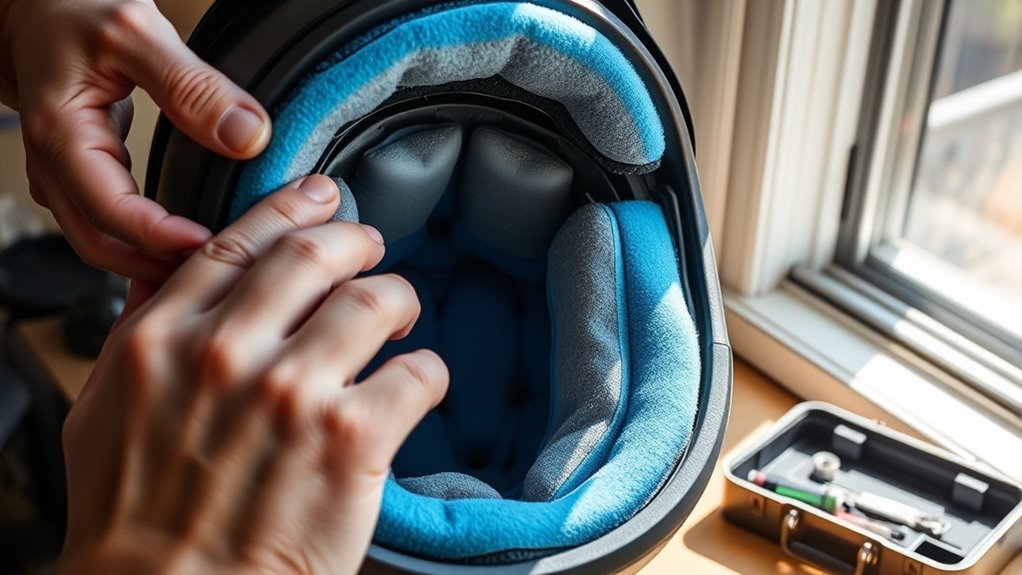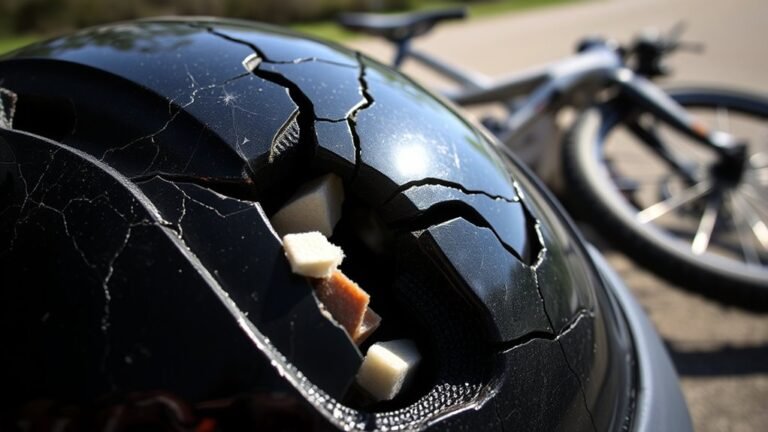How to Replace Helmet Padding for a Better Fit
To replace helmet padding for a better fit, first assess the current condition for wear or odor. Choose new padding that suits your activity and helmet model. Carefully remove old padding, using heat if necessary, to avoid damage. Install the new padding, ensuring it’s aligned and securely bonded. Adjust the helmet on your head, checking the fit and comfort by moving side to side. There’s more to ensuring ideal safety and comfort to discover.
Assessing the Condition of Your Helmet Padding
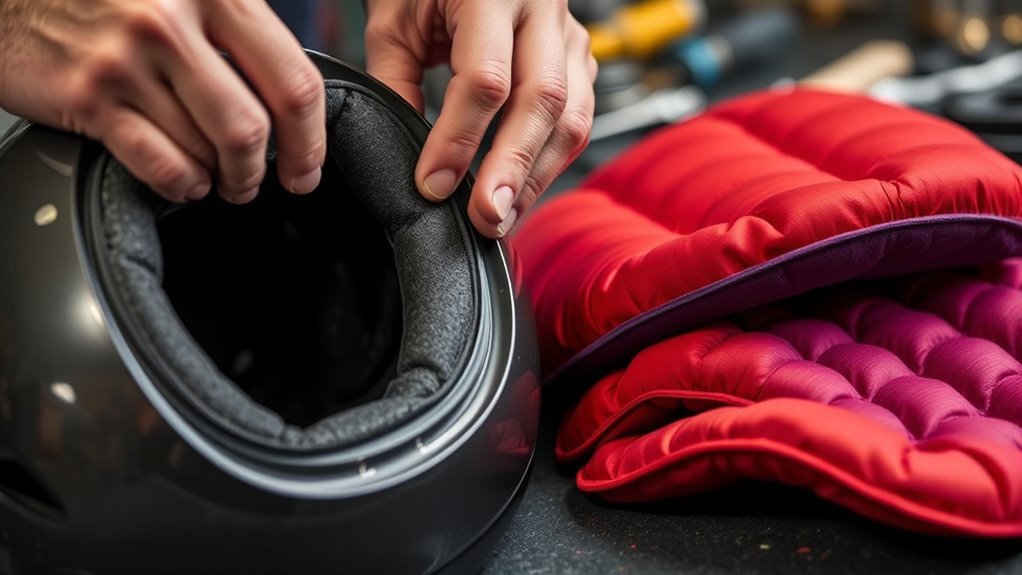
Before you can replace your helmet padding, it’s essential to assess its condition accurately. Start by inspecting for visible wear, such as fraying, tears, or thinning. Check for any odors, which can indicate moisture retention and potential mold growth—both detrimental to padding longevity. Properly functioning padding directly influences helmet safety, so guarantee it maintains its original shape and firmness. Pressing down on the padding should yield resilience without excessive compression. If you notice any degradation, it’s a clear sign that replacement is necessary. Remember, quality padding not only enhances comfort but also contributes to the overall effectiveness of your helmet. Prioritize this assessment to guarantee you’re fully equipped for the freedom of your activities without compromising safety.
Choosing the Right Replacement Padding
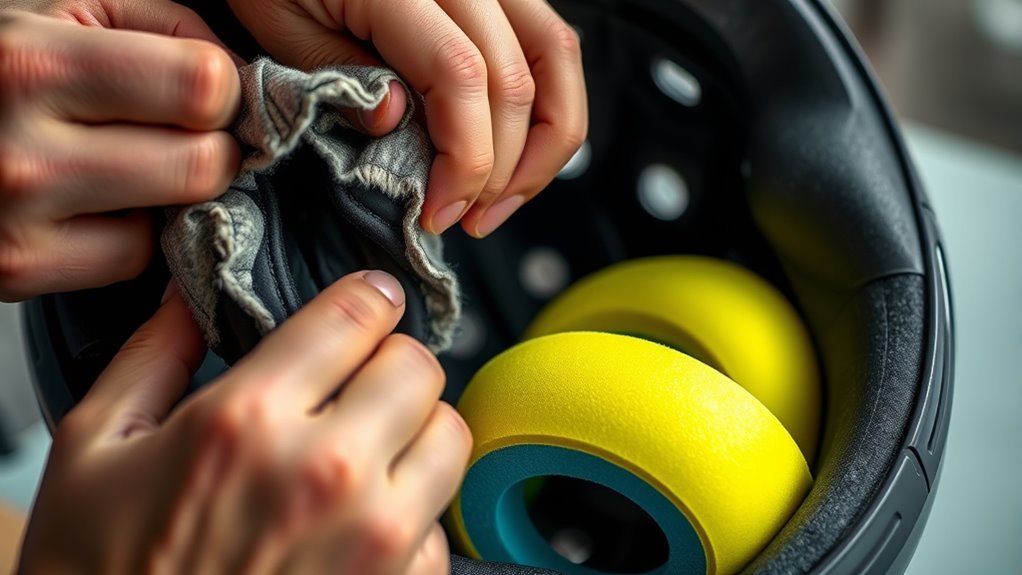
When selecting replacement padding for your helmet, it’s crucial to take into account factors such as material, thickness, and compatibility with your helmet model. The right choice can greatly enhance your comfort and safety.
Selecting the right replacement padding for your helmet is vital for maximizing comfort and safety.
- Padding materials: Look for options like foam, gel, or specialized impact-absorbing materials.
- Thickness: Choose the appropriate thickness for your head shape and desired fit.
- Sizing options: Confirm the padding fits your helmet snugly, checking for adjustable configurations if available.
- Compatibility: Verify that the replacement padding is designed for your specific helmet model.
Removing the Old Padding
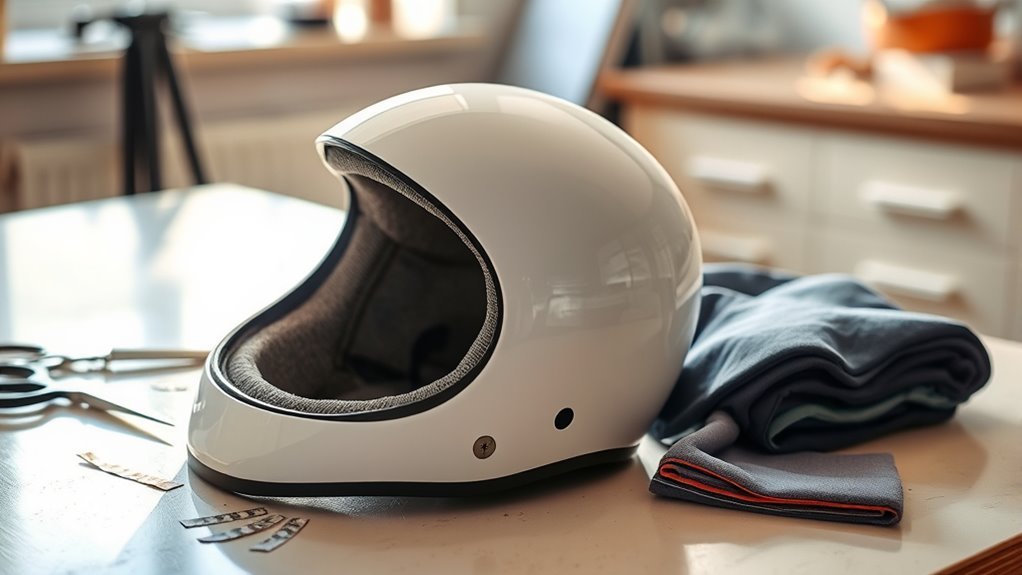
Once you’ve chosen the right replacement padding, the next step is to remove the old padding from your helmet. You’ll want to use effective removal techniques based on the padding materials used. Start by carefully peeling back the edges of the padding, ensuring you don’t damage the helmet shell. If it’s glued, a heat source can help loosen the adhesive.
Here’s a quick reference table to guide you through the removal process:
| Material Type | Removal Technique | Tools Needed |
|---|---|---|
| Foam | Peel and pull | Hands |
| Gel | Heat application | Hairdryer |
| Fabric | Unstitch or cut | Scissors |
| Velcro | Pull apart | Hands |
| Adhesive | Heat and peel | Hairdryer |
Follow these steps for a smooth removal process.
Installing the New Padding
Now that you’ve removed the old padding, installing the new padding is essential for guaranteeing comfort and safety during use. Begin by selecting the appropriate padding materials that suit your helmet type and riding style. Use the following installation techniques to guarantee a secure fit:
- Align the new padding with the helmet’s contours.
- Press firmly, allowing the adhesive to bond with the helmet shell.
- Guarantee all edges are smooth and free from wrinkles.
- Allow adequate curing time before testing the helmet.
Ensuring a Proper Fit and Adjustment
To guarantee your helmet provides ideal protection, it is crucial to achieve a proper fit and adjustment. Start by putting on the helmet and ensuring it sits level on your head, just above your eyebrows. Next, adjust the chin strap, ensuring it’s snug but not overly tight—your helmet should stay in place without shifting. Use padding materials that suit your comfort and activity level; thicker materials may provide more cushioning, while thinner options can offer a more secure feel. Test fit adjustments by moving your head side to side; if the helmet shifts, continue tweaking the straps and padding until it feels secure. A well-fitted helmet enhances safety and allows you to enjoy your activities with confidence.
Frequently Asked Questions
How Often Should Helmet Padding Be Replaced?
You should replace helmet padding every 1-2 years, much like changing the tires on a bike for safety. Just as worn tires can lead to a dangerous ride, old padding sacrifices comfort and protection. To guarantee padding longevity, check for signs of wear, like fraying or loss of firmness. Maintenance tips include regularly cleaning the padding and storing your helmet in a cool, dry place, preserving its integrity for the freedom of the open road.
Can I Wash My Helmet Padding?
Yes, you can wash your helmet padding to maintain helmet hygiene. It’s vital for keeping your gear fresh and safe. Use mild soap and lukewarm water, avoiding harsh detergents that could damage the material. Gently hand wash the padding, then air dry it completely before reassembling. Regular padding maintenance helps guarantee a comfortable fit, prolongs the life of your helmet, and enhances safety during your rides. Keep your gear in top condition for ultimate freedom!
What Materials Are Best for Helmet Padding?
For ideal helmet padding, consider materials like foam, gel, and moisture-wicking fabrics. Foam offers good shock absorption, while gel provides enhanced comfort levels, molding to your head shape. Moisture-wicking fabrics help keep you dry during rides. Each material can impact how well your helmet fits and feels, so it’s crucial to try different options. By selecting the right padding materials, you can guarantee a secure and comfortable experience while riding.
Do Different Sports Require Different Padding Types?
Yes, different sports do require different padding types. Sport-specific padding is designed to provide maximum protection based on the unique risks associated with each activity. For instance, football helmets often utilize thicker, shock-absorbent padding, while cycling helmets feature lighter, more ventilated materials for comfort during long rides. Understanding these differences guarantees you choose the right helmet padding, enhancing both safety and performance in your chosen sport, allowing you to enjoy your activity with confidence.
Can I Customize My Helmet Padding Thickness?
Yes, you can customize your helmet padding thickness to enhance helmet comfort. Many helmets allow for padding customization, letting you choose from different thicknesses to achieve the perfect fit. When selecting padding, consider the type of sport and your personal preferences, as thicker padding may provide more cushioning but could affect airflow. Always make sure the padding conforms properly to your head shape, maintaining safety while maximizing comfort during use.
